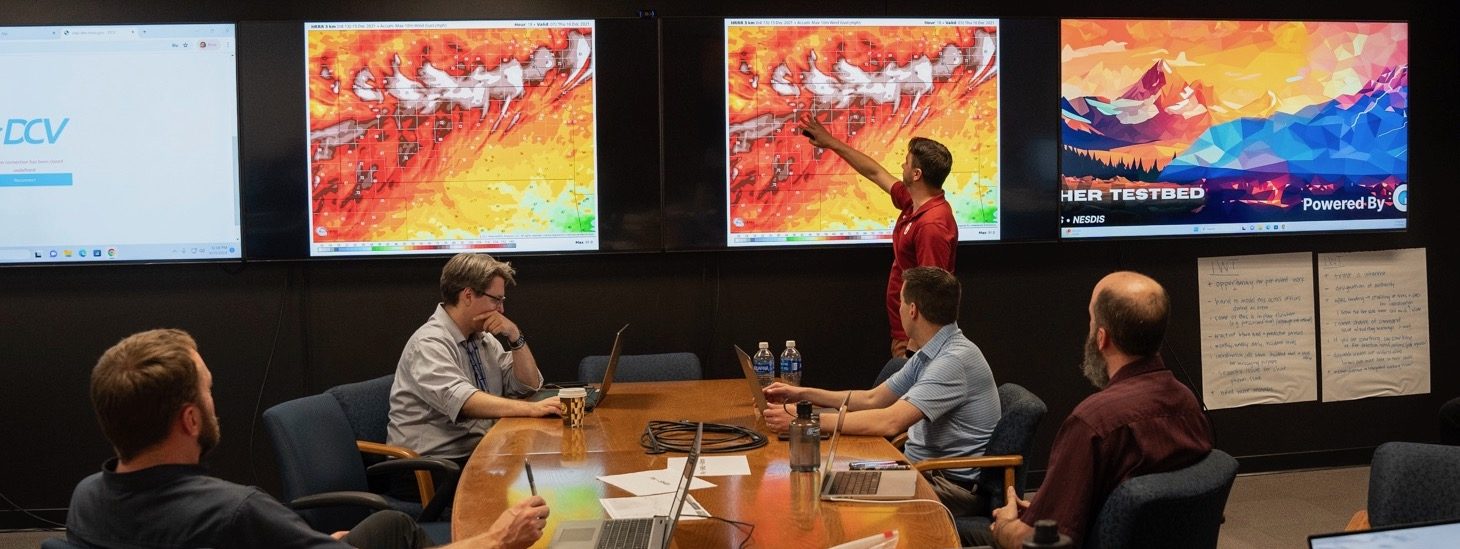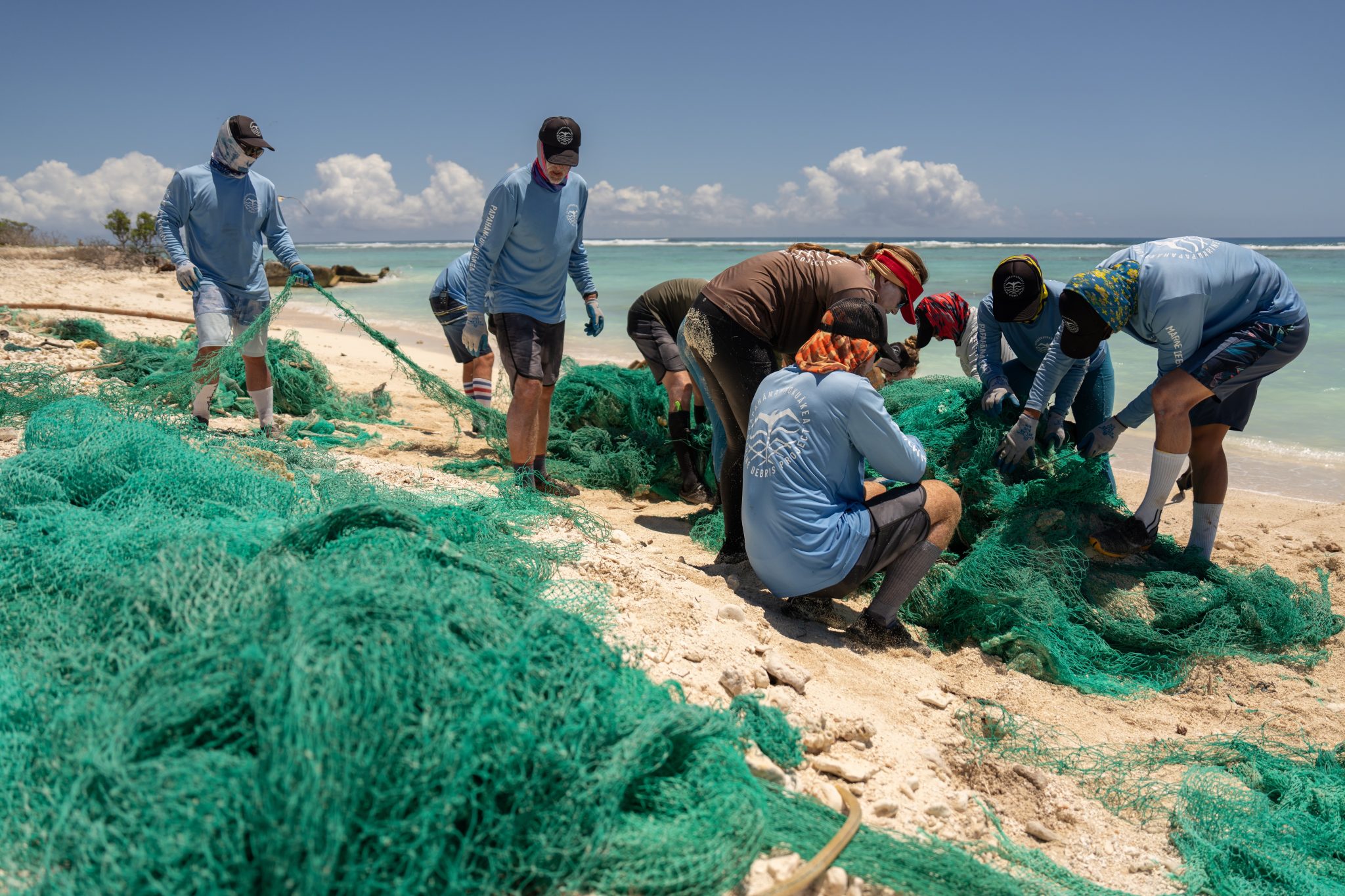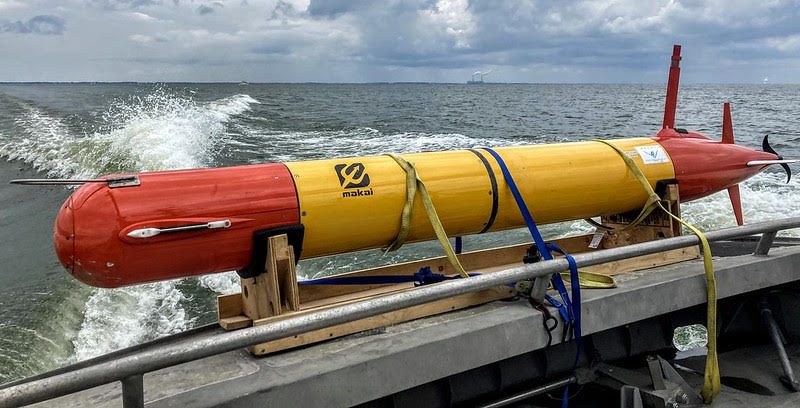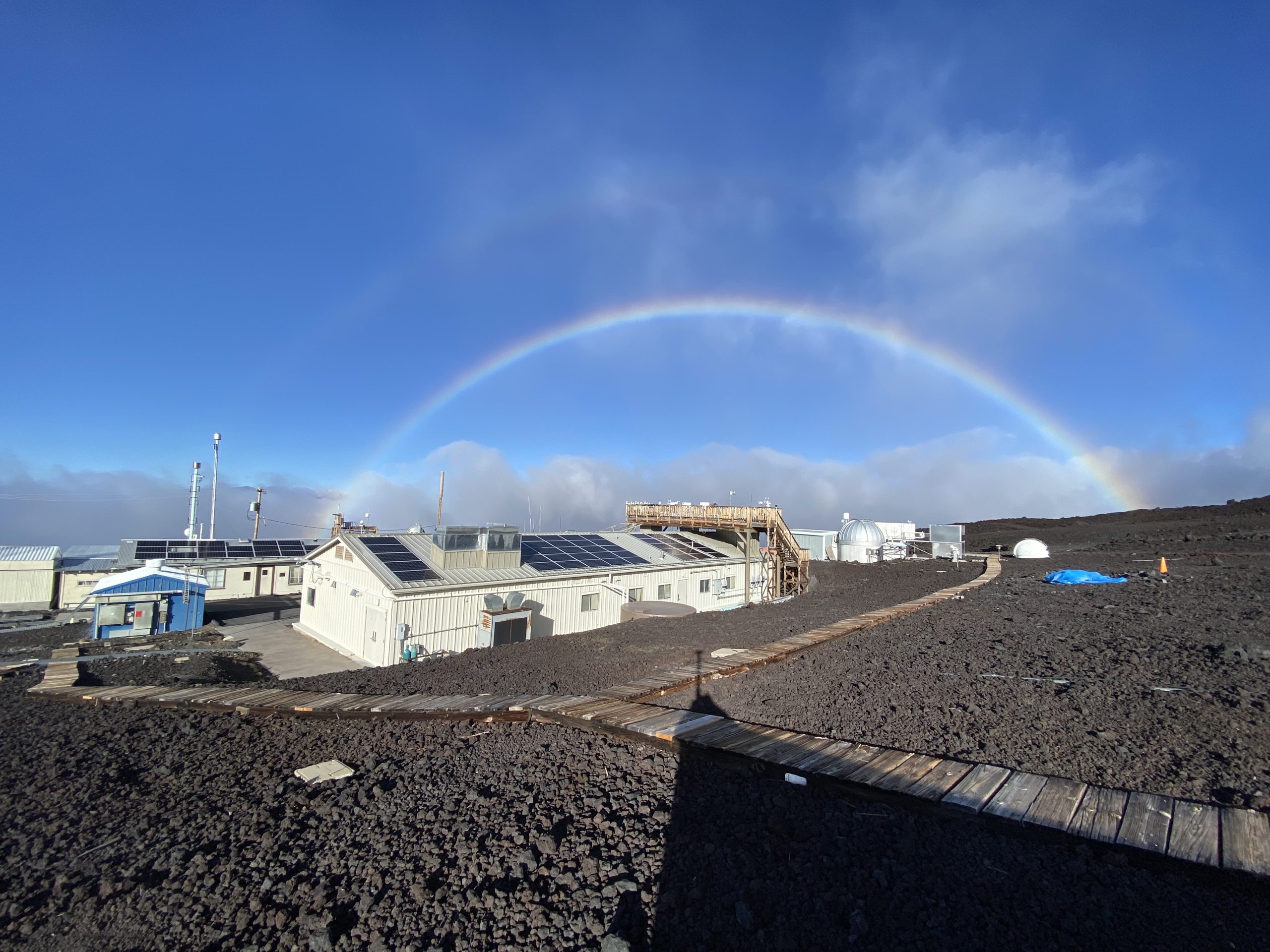Improved forecasts will also benefit mariners, aviators, and search and rescue
A new research effort led by NOAA and the Department of Energy spinning up this month will play a significant role in the development of wind energy off of the New England coast.
Wind power is an essential source of renewable energy, but it’s a variable power source, dependent on weather conditions. Electric grid operators keep the grid stable by balancing the variable amount of power produced from wind farms by increasing or decreasing power from fossil fuel generation stations as wind increases and subsides. An economic study has shown that improvements to NOAA’s operational weather prediction models, which are used to make decisions on the different sources of energy generation, can save the electrical utilities hundreds of millions of dollars per year, which has associated savings for ratepayers.
That’s why NOAA and the Department of Energy, together with a number of academic and industry partners, are launching the third Wind Forecast Improvement Project (WFIP-3), a two-year investigation of wind and weather conditions in a coastal region from Nantucket off Massachusetts to Block Island off Rhode Island.
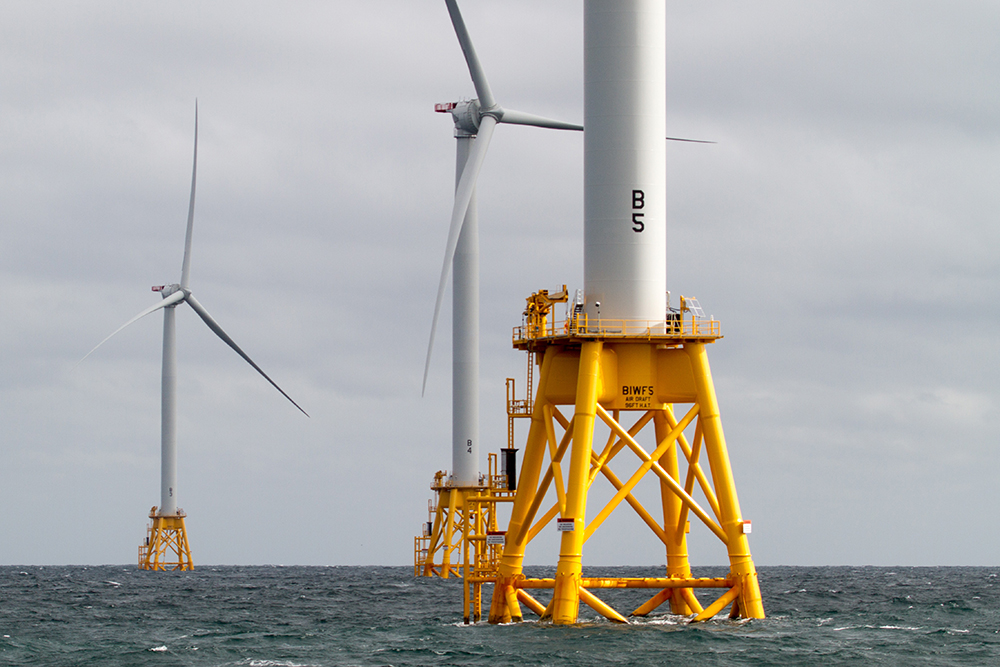
“Accurate weather forecasting is critical for the effective operation of wind generation facilities, and the efficient integration of renewable energy into the electric grid,” said Dave Turner, senior scientist at the NOAA Global Systems Laboratory (GSL) and the head of the NOAA’s Atmospheric Science for Renewable Energy program. “Specifically, this project will help improve NOAA’s weather prediction models so they provide earlier and better forecasts of winds and turbulence over the ocean that are most important for driving wind turbines.”
In early November, researchers from NOAA’s Physical Sciences and Global Monitoring laboratories, several DOE labs, universities, and the Woods Hole Oceanographic Institution, installed 20 different meteorological instruments on Nantucket and Block Island, with additional instruments on Martha’s Vineyard, Massachusetts, and in Narragansett, Rhode Island.
These weather monitoring stations will be complemented in 2024 by additional instruments being installed on buoys and a large barge to capture wind data from the water’s surface that will be located closer to where the offshore wind turbines are being installed.
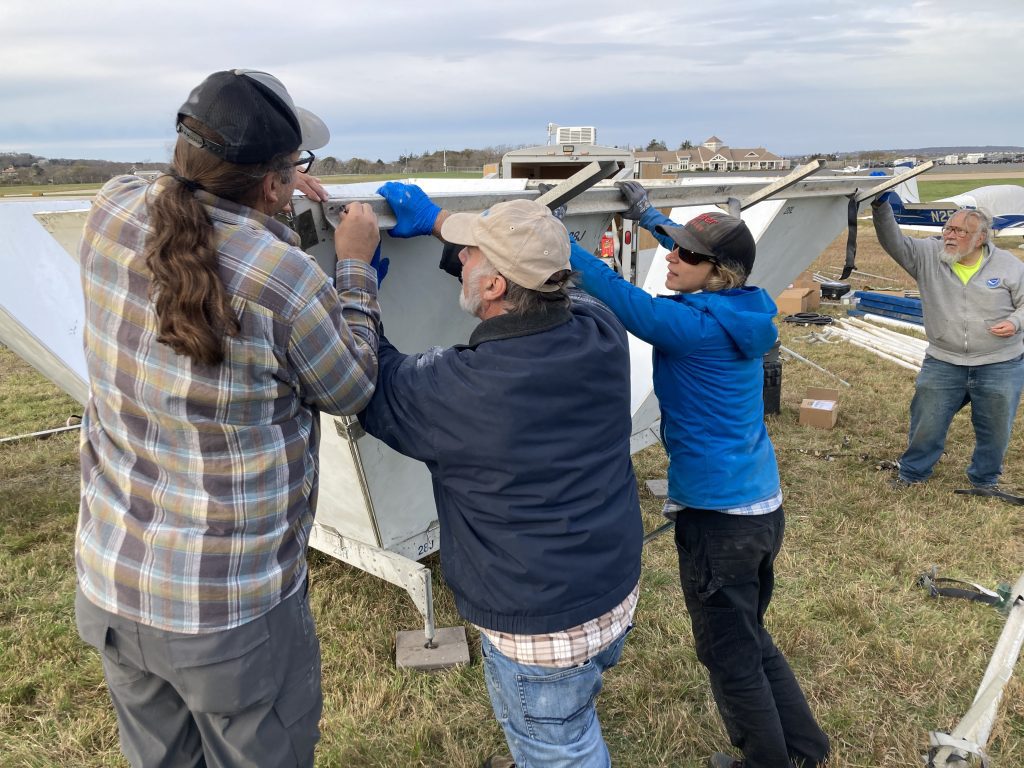

Their goal: to capture detailed observations of temperature, humidity, pressure, solar radiation, wind speed and direction, along with other meteorological data, through the summer of 2025. The data will be used to evaluate the variability of the winds at turbine hub height, and how these winds vary under different atmospheric conditions, ocean conditions, clouds and fog, and more. Analyses such as these will be used to identify biases in models like NOAA’s High-Resolution Rapid Refresh (HRRR) weather prediction model, with an eye toward eliminating them in the HRRR’s replacement, the Rapid Refresh Forecast System.
The study area is where construction on the first utility-scale offshore wind project in the U.S is now underway. The first steel pilings for the Vineyard Wind project, 13 nautical miles south of Nantucket and Martha’s Vineyard, were installed in June 2023. When complete, the 800-megawatt installation will generate renewable energy for over 400,000 homes and businesses across Massachusetts, while reducing carbon emissions by over 1.6 million tons per year.
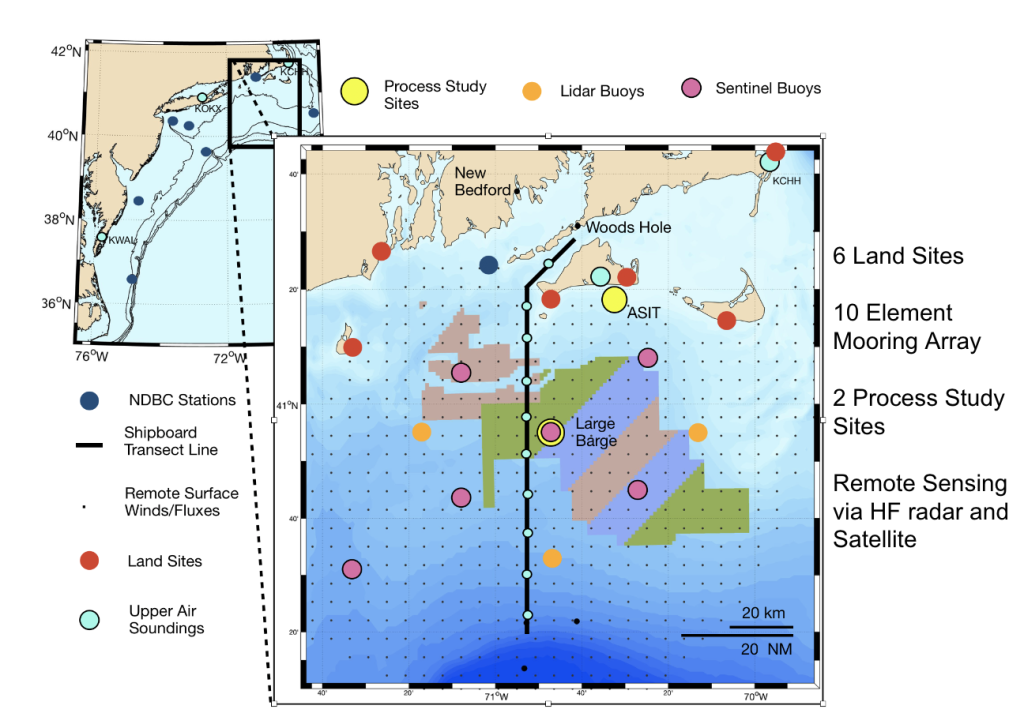

Improved forecasts will also benefit the Block Island Wind Farm, the first operational offshore wind farm in the United States. This pilot-scale project consisting of six megawatt turbines was installed in Rhode Island state waters about three miles from Block Island in 2016. Despite the variability of the winds, this wind farm provides essentially 100% of energy needs for all households on Block Island along with an estimated 12,500 households on the Rhode Island mainland. This eliminates the need for up to 456,900 gallons of diesel fuel per year for generators on Block Island, as well as the cost of transporting fuel to the island.
While the main goal of WFIP3 is better wind forecasts, the improved understanding of the weather variables that control winds will also benefit mariners, search and rescue operations, and the aviation community that fly over New England’s off-shore waters.
WFIP-3 is the third in an evolving series of coordinated research efforts to improve the accuracy and lead time for wind forecasts.
In 2011 and 2012, WFIP launched with a project focused on two regions of the northern and southern Great Plains. This first project investigated how to better use observations to initialize weather prediction models, with a focus on wind forecasts out to 12 hours. WFIP-2, located in the dramatic landscape of the Columbia River Gorge straddling Oregon and Washington State, focused on understanding how complex terrain affects the way models simulate low-level winds. Turbines in the region have been sited both on hill tops and within valleys, because the topography can generate regular wind patterns that can be mined for wind energy.
“This research is essential to integrate renewable energy more efficiently into the electrical grid, making the grid more reliable and saving money for both providers and consumers,” said Turner. “This will become increasingly important as a greater share of electricity is provided by wind and solar energy.”
